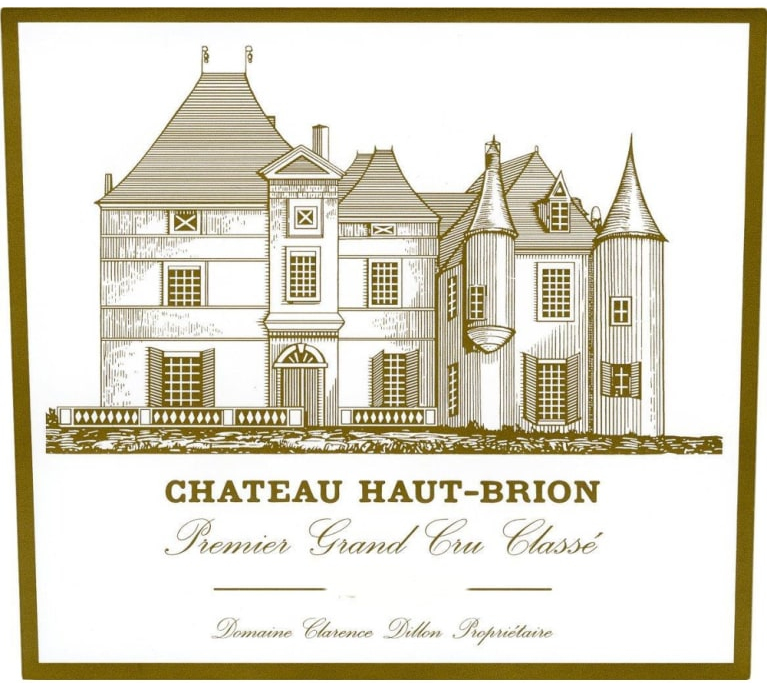Château Haut-Brion 2003
Review of the Estate
Château Haut-Brion is notable for its First Growth status, under both the 1855 and 1973 Mèdoc classifications, despite its geographical location in Graves. This mark of respect is due to the obsession with quality and continual winemaking improvements that have been the dominant modus operandi at Chateau Haut Brion over the past four centuries.
The modern estate grew from humble origins as a property known as Maison Noble d'Aubrion which was acquired by Jean de Pontac through his marriage to Jeanne de Bellon in 1525.
Pontac was responsible for expanding Chateau Haut-Brion, and creating an international market for the wines, the quality of which was noted by Samuel Pepys who wrote in April 1663,"here I drank a sort of French wine, called Ho Bryan, that hath a good and most particular taste that I never met with." However, Chateau Haut Brion was still known formally as Château Pontac until the late 18th Century when it eventually passed out of the Pontac family's hands.
As the first recorded First Growth to be imported into the United States, when Thomas Jefferson purchased six cases during his travels and sent them back to his home in Virginia, it is perhaps unsurprising that Chateau Haut-Brion was eventually purchased by an American. After a string of owners, financier Clarence Dillon acquired the estate in 1935. Chateau Haut Brion is currently owned by Domaine Clarence Dillon, which is a limited company and thereby prevents excessive divisions of the estate between successive generations. Presently, Prince Robert of Luxembourg is at the helm, with Jean-Philippe Delmas managing the viticultural aspects of the business.
As a First Growth, there is constant pressure to produce outstanding yet consistent wines and Château Haut-Brion has consistently embraced new technologies to meet this standard. In the 1960s, the estate pioneered the installation of stainless steel vats - the first of the First Growths to do so. This increased the reliability of the vinification process and positioned Chateau Haut Brion at the forefront of innovation in the Bordeaux region, producing a savoury wine which is both rich and intricate.

Vineyard
Surface area: 106.7 acres
Grape Varieties: 45% Cabernet Sauvignon, 37% Merlot and 18% Cabernet Franc
Average age of vines: 36 years
Density of plantation: 8,00 vines per hectare
Average yields: 35-45 hectoliters per hectare
Average cases produced: 11,000 per year
Plateau of maturity: 10 - 40 years
Château Haut-Brion 2003 Reviews / Tasting Notes
Robert Parker - The Wine Advocate
Point Score: 95
Even better, and clearly the best wine made in the Haut-Brion stable in 2003 (the last vintage of the great Jean-Bernard Delmas as administrator), the 2003 Haut-Brion is a blend of 58% Merlot, 31% Cabernet Sauvignon and 11% Cabernet Franc that hit 13% natural alcohol, which seemed high at the time, but given more recent vintages is modest. Dark ruby/plum in color, with no amber or orange at the edge, the wine exhibits an abundance of roasted herbs, hot rocks, black currants, plum, and balsamic notes. Quite rich, medium to full-bodied and more complete, with sweeter tannins than La Mission Haut-Brion, this full-bodied Haut-Brion has hit full maturity, where it should stay for at least a decade. Bravo!
Side Note:
These are two great successes in this vintage that have aged well and surprised me by their intensity and overall complexity.
Wine Spectator
Point Score: 95-100
Incredibly intense aromas of tobacco, chocolate, toasted oak and currants. Superripe and exotic. Full-bodied, with great depth of fruit and velvety tannins. Very long. This reminds me of the 1989. Jean-Philippe Delmas says it could be better than 2000. I certainly agree. Score range: 95-100
Stephen Tanzer - Vinous
Point Score: 95-96
Bright ruby. Deep, superripe aromas of black cherry, roasted nuts and cocoa. Then thick, lush and sweet, with a rare fleshiness and pliancy of texture for such a young Haut-Brion. A truly three-dimensional wine that's packed with sweet, rich fruit. The big but ripe tannins hit the palate very late, allowing the fruit to expand and build in a way that few 2003s can match. I suspect that the wine's slightly roasted character will always give away its vintage (but then the same is true of the amazing '89), but its texture and breadth are extraordinary.